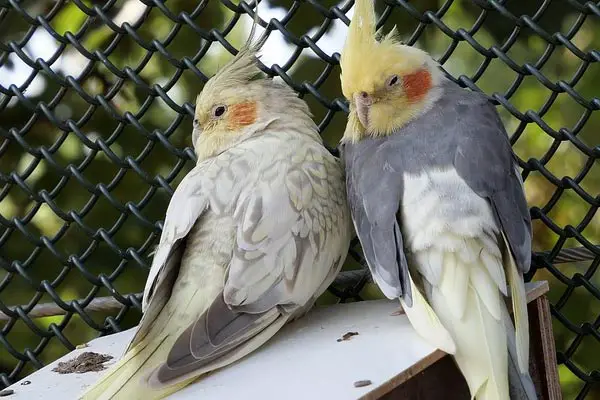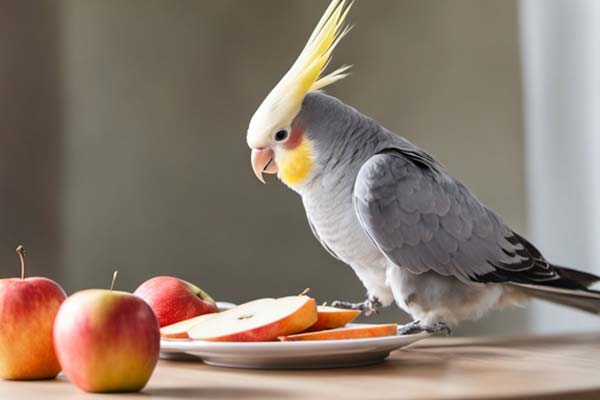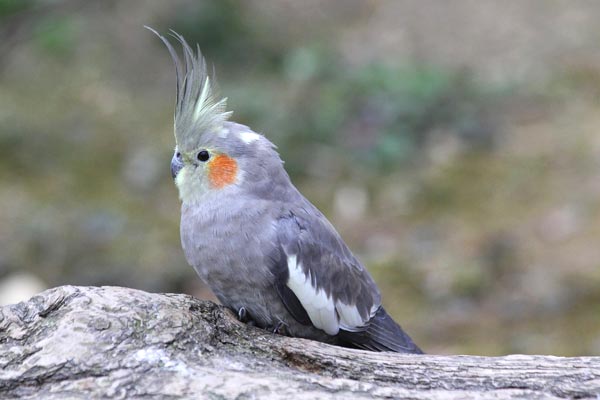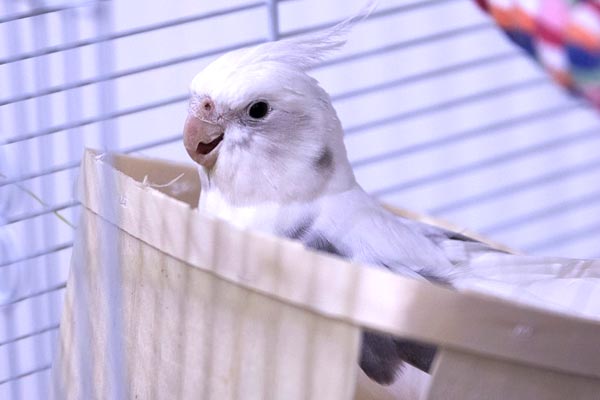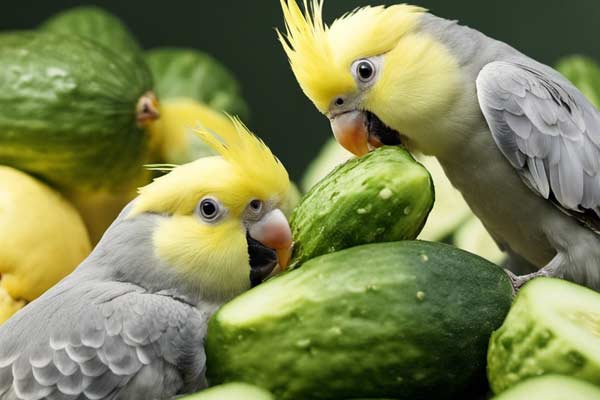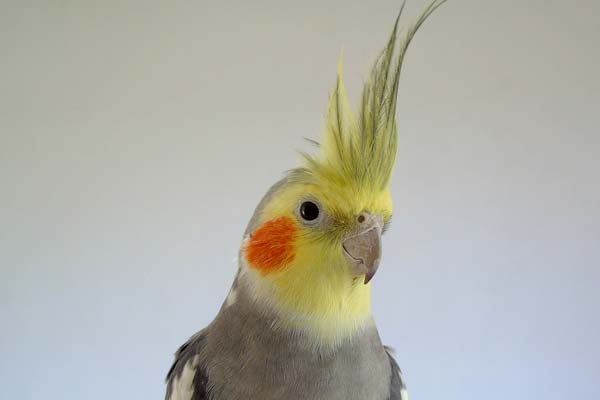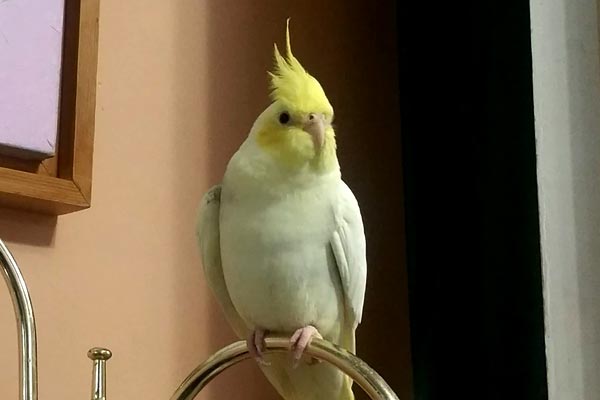Cinnamon Cockatiel: Rare or Common? What You Need to Know!
Wild cockatiels are typically grey, white, and yellow with bright orange cheek patches. But captive-bred cockatiels display a far broader spectrum of colors and patterns.
Cinnamon is one such variation on the normal grey cockatiel coloration or mutation.
As cockatiel breeders learn more about avian genetics, more colors and patterns are being developed. So while the cinnamon cockatiel used to be considered a rare mutation, it is much more common and recognizable today.
In this article, learn all about the cinnamon cockatiel and the intriguing genetics that combine to produce this lovely and subtle coloration.
Cinnamon Cockatiel
A cinnamon cockatiel is a term used to describe a specific color mutation. In this context, Cinnamon describes a variation of normal grey that looks more silver with a brown hue.
Like all cockatiel color mutations, Cinnamon describes a color spectrum from light to dark. The important constant is the silver-brown tone of the feathers.
See What a Cinnamon Cockatiel Looks Like
This short YouTube video gives you an adorable glimpse into what a young cinnamon cockatiel looks like.
What Is a Cinnamon Cockatiel
Understanding the difference between a normal grey cockatiel and a cinnamon cockatiel mutation can help first to understand what breeders mean by normal grey coloration.
Normal grey (sometimes called simply “normal”) is the color of wild cockatiels.
As Feisty Feathers breeder explains, normal grey is the color pattern against which all other variations, or mutations, are compared.
Normal grey cockatiel description
Normal grey is a dark grey color closer to black than white on the spectrum. The normal grey color is typically found on the chest and body, inner wings, tail, and, in mature adult female cockatiels, on the cheek patches.
The outer wings are pure white. The cheeks are yellow, and the cheek patches are bright orange.
Now that you have this visual image let’s look at how this changes in a cinnamon cockatiel.
Cinnamon cockatiel description
The main difference between a normal grey cockatiel and a cinnamon cockatiel is the color on the chest, body, inner wings, tail, and, for adult female cockatiels, on the cheek patches.
The dark grey changes to a lighter silvery-brown color. This color may get darker or lighter as the bird grows up.
In some cases, as KM Breeding Aviary describes it, cinnamon looks more like a traditional brown color.
NOTE: Sometimes, the terms cinnamon and fallow are used interchangeably. But these are not the same color mutations. Follow typically has a more yellow tone to the brown and may have red-appearing eyes.
The next section will examine the genetics that must be present to turn normal grey into a cinnamon cockatiel.
What Is a Cockatiel Mutation?
The word mutation can sound scary to many people because it can be associated with heritable health issues.
But not all mutations are bad.
Genetic Lessons points out that a mutation is essentially just a change in a gene. Some gene changes may only change how a color pigment expresses or appears on an animal.
Things can get dangerous if a breeding program focuses on producing a specific color mutation that the breeder starts breeding related birds together.
This narrows the gene pool and potentially promotes minor or severe health issues.
Because of this, anytime you decide where to purchase your cockatiel, you always want to research the breeder’s reputation to ensure their birds are healthy, friendly, and long-lived.
Many cockatiels are relinquished to shelters because their owners don’t have time to train or care for their birds. If you decide to rescue a cinnamon cockatiel, you may not know anything about its breeder or parents.
But you can ensure your avian veterinarian examines the bird before committing. This way, you can verify that the bird you want to adopt is healthy.
So now, let’s move on to learning more about the kind of deliberate cockatiel breeding program required to produce a cinnamon cockatiel.
Learn the Basics of Cockatiel Color Genetics
As Multiscope Hot Spot for Birds outlines, there are three types of cockatiel color patterns or genetic mutations.
These are sex-linked, recessive, and dominant.
This is important to know if you plan to breed cockatiels or if you want to verify that the breeder you get your bird from understands cockatiel color genetics and is breeding healthy birds.
Cinnamon cockatiels belong to the sex-linked mutation category.
What on earth does this mean?
Let’s start by briefly defining each category so you can learn the differences.
Dominant cockatiel color mutation
Dominant color mutations mean only one parent bird must contribute the genes for a chick to have that color.
Recessive cockatiel color mutation
Recessive color mutations have the exact opposite requirements. Both parent birds must contribute the correct gene for a chick to have that color.
Sex-linked cockatiel color mutation
Sex-linked cockatiel color mutation breeding is the most challenging kind of breeding program, as Talk Cockatiels Forum explains.
In birds, females carry essential “XY” genes, and males carry “XX” genes (you probably already noticed that it is just the opposite for humans).
Sex-linked is essential here because, in the case of a cinnamon mutation, the female will potentially only carry one copy of the correct gene. In contrast, the male may carry two copies of the correct gene.
The gene mutation that causes a cinnamon cockatiel color mutation is always found on the X chromosome – never on the Y chromosome.
This is very important to know for two reasons.
First, the female cockatiel must show cinnamon coloration. If the female cockatiel is not cinnamon, she does not have the correct gene.
Second, the male cockatiel does not have to show cinnamon coloration. However, the male cockatiel must be split to the correct gene, which means the male carries it on one of his X genes to produce cinnamon cockatiel chicks.
In summary, if you want to breed cinnamon cockatiel chicks, you must select a cinnamon cockatiel female and a male cockatiel that shows the cinnamon coloration or carries it (“split to”) on at least one of his X chromosomes.
But how can you know if the male cockatiel has the correct gene if you can’t see the cinnamon color on his feathers?
This is what can make cockatiel color genetics so complicated!
Genetic Calculator 1.3 Cockatiels gives you a better visual idea of the type of calculations breeders often have to make to determine what color chicks a breeding pair might produce.
Possible Outcomes When Breeding Cinnamon Cockatiels
If you know the genetic history of your breeding pair, breeding cinnamon cockatiels becomes easier.
But if you are unsure about the male cockatiel’s genetic history, you could be in for surprises when the eggs start hatching.
As Talk Cockatiels Forum outlines, there are several possible outcomes when you are breeding for the cinnamon cockatiel color mutation and are unsure about the male cockatiel’s genetic history.
Sex-linked female cockatiel plus sex-linked male cockatiel pair
The first happy outcome is that both the female and male birds carry the correct genetic mutation for cinnamon. In this case, all of the chicks will grow up to be cinnamon cockatiels.
Here, the female cockatiel chicks will be visually cinnamon-colored, and so will the males.
Normal female cockatiel plus sex-linked male cockatiel pair
Remember how we said earlier that a female cockatiel has to be visually cinnamon for the chicks to be cinnamon?
This is where this fact starts to become significant.
The pair cannot produce a whole clutch of cinnamon chicks if the female cockatiel is not visually cinnamon.
The pair can produce up to half a clutch of visually cinnamon chicks females. The males will be split for the cinnamon mutation – meaning that one of their X chromosomes carries the mutation – but will not appear cinnamon visually.
Normal male cockatiel plus sex-linked female cockatiel
In this third outcome, even if the female is visually cinnamon, the male bird is not carrying the required gene to create visually cinnamon cockatiel chicks.
The female chicks will not be cinnamon. The male chicks will be split into the cinnamon mutation. Again, this means the males will carry the correct gene but not look like cinnamon.
Knowing how complicated it can get to breed cinnamon cockatiels, you may now appreciate your cinnamon bird even more!

